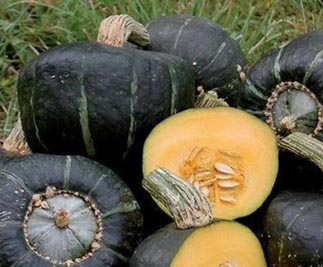Table of Contents
Selection and storage
In the U.S, it is available from fall to mid-winter months in the farmer’s markets.
Avoid those produce with blemished/soft/rot stem, damaged, cuts/punctured, etc.
Buttercup has a thick, hard rind. It can be stored for up to six months in a cool dry place.
Cut sections, however, should be used in the cooking early. If you choose to keep it extended use (up to 1-2 days only), then place it inside a cellophane wrap in the refrigerator set at high relative humidity.
Preparation and serving methods
Buttercup squash is one of the popular winter vegetables in the U.S, Canada, and Mexico. It can be substituted for butternut, kabocha, or pumpkin in similarly cooked recipes.
Its dense, starchy, grainy, orange-yellow flesh closely resembles that of sweet potatoes.
Buttercups are known for their dry-textured flesh, which holds their shape in whole baked, stuffed, stews and curries. It is best suited for baking, roasting, steaming, stuffing, boiling, and sautéing.
Its rind is tough, and although edible, some chefs prefer to peel it before consumption.
In a similar way as kabocha, it can also be sliced into rings or cubes and used in an endless array of recipes such as soups, salads, stews, gratins, sandwiches, and risotto.
Here are some serving tips:
-
Buttercup is used in creamy soups in Brazil, Colombia, and Peru.
-
Raw grated buttercup is enjoyed in salads, which add a sweet crunch and burst of yellow-orange hue.
-
In a similar way akin to kabocha or delicata squash, buttercup is cut in halves, scoop off seeds, and stuff with bread, grains, bacon, meat, cheese, mushrooms, and leafy greens (spinach), and herbs, and bake in the oven.
-
Enjoy buttercup squash gratin with complementing vegetables, or sausage.
-
Mashed/pureed buttercup is a healthy alternative to mashed potato.
-
Baked and pureed or mashed, it can be used as a filling for empanadas, enchiladas, and ravioli, or used in desserts, pies, puddings, and bread.
-
Buttercup squash kernels can be eaten as a snack. Simply toast them in the oven and enjoy!
Safety profile
Allergic reactions to buttercup squash are rare. Pregnant women and infants can safely consume it. (Medical disclaimer).
You may also like to read ≻≻-
≻≻- Spaghetti squash nutrition facts.
≻≻- Acorn squash nutrition facts.
≻≻- Delicata squash nutrition facts.
≻≻-Pattypan squash nutrition facts.
≻≻-Back to Vegetables from Buttercup Squash nutrition. Visit here for an impressive list of vegetables with complete illustrations of their nutrition facts and
health benefits.
≻≻-Back to Home page.
Further reading:
-
Kabocha and Buttercup Squash for Western Oregon Gardens- Oregon State University Extension Service.
-
Watch your garden grow- University of Illinois Extension (PDF).





More Stories
The One Thing You Should Never, Ever Do if You Have Insulin Resistance and Want to Lose Weight
Tuna Salad Lunch Box – JSHealth
Advanced Wellness Course – Heart Health